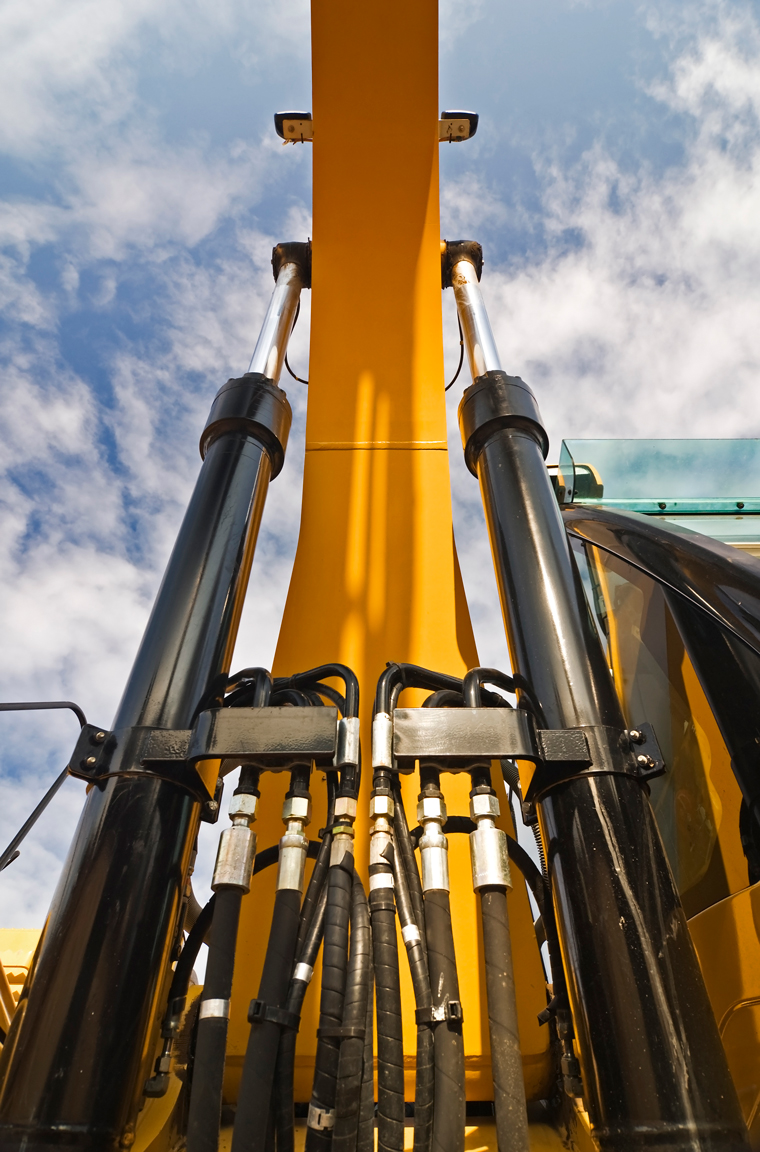

What Are the Advantages and Disadvantages of Hydraulic Cylinders?

Hydraulic cylinders use pressurized hydraulic fluid to create linear force and motion, used in construction machinery, manufacturing equipment and vehicles. Cylinders consist of a chamber, piston, and fluid, with valves controlling the fluid's flow direction, determining the cylinder's direction of the force.
What are the key benefits of Hydraulic cylinders?
Hydraulic cylinders are mechanical devices that are widely used in various applications. They offer several benefits, making them popular for generating linear force and motion. Some of these benefits include:
-
High force output
Hydraulic cylinders deliver powerful force output due to the incompressibility of hydraulic fluids. Fluid pressure is transmitted equally in all directions, providing high force output. Large piston surface area further enhances force output.
-
Smooth operation
Hydraulic cylinders offer a smooth operation due to using hydraulic fluid as the working medium. The fluid creates a cushioning effect leading to a more controlled and stable operation. Additionally, hydraulic cylinders can be designed with adjustable flow controls that regulate the cylinder's movement speed, providing greater control and precision.
-
Wide range of sizes and configurations
Hydraulic cylinders are available in various sizes and configurations, from small, compact cylinders used in robotics to large, heavy-duty cylinders used in construction equipment. They can be designed in different configurations to accommodate specific application requirements, including single-acting, double-acting, telescopic, and multiple-stage cylinders.
-
High reliability
Hydraulic cylinders are designed to generate longitudinal force and handle the longitudinal load while also being able to withstand transverse loads of up to 10-15% of the total force. To ensure high reliability, hydraulic cylinders are subject to rigorous testing and quality control procedures, further enhancing their reliability.
-
Easy maintenance
Hydraulic cylinders are designed for easy maintenance, with many components accessible for inspection and replacement.
-
Energy efficiency
Hydraulic cylinders are highly energy efficient as they can convert hydraulic pressure into linear motion with minimal energy loss. Also, hydraulic systems often incorporate energy-saving features which adjust flow rates to match demand, further reducing energy consumption.

What are the disadvantages of using Hydraulic Cylinders?
Here are five disadvantages of hydraulic cylinders:
-
Potential for leaks
Hydraulic cylinders rely on hydraulic fluid to function correctly; any leaks can compromise their performance. In addition, hydraulic fluid leaks can be messy and difficult to clean up. However, a good piston rod, shaft and steel pipe can prevent oil leakage.
-
Rust
Improper choice of shaft material can cause surface scratches and lead to rust, which can compromise the performance and longevity of the hydraulic cylinder. But the powerful corrosion resistance of a high-quality piston rod, shaft and steel pipe should not be disregarded.
-
Maintenance requirements
While hydraulic cylinders are designed for easy maintenance, they require regular upkeep to ensure proper performance.
-
Noise and vibration
Hydraulic cylinders can produce significant noise and vibration during operation, which can be a concern in some applications. This can be mitigated through noise-reducing components and proper installation techniques.
-
Environmental impact
Hydraulic fluid can harm the environment if not correctly disposed of, and its production can contribute to greenhouse gas emissions. As a result, some organizations are moving away from hydraulic systems in favor of more sustainable alternatives.
In conclusion, the key benefits of hydraulic cylinders are their ability to provide a significant amount of linear force, efficient power-to-weight ratios, variable speed control, and the ability to provide power to machines in even the furthest locations away from the power generation source. Hydraulic cylinders, also known as 'hydraulic jacks', 'hydraulic rams' or 'actuators', are used where linear motion is required to move something.
- Mr. Fang Chien Tien Appointed 17th President of Central Taiwan Entrepreneurship Association
- Golden Asia got the invention patent for chrome-plated machine
- Elevate Your Operation with the Right Hydraulic Cylinder Supplier
- What Happens When Piston Rods Are Damaged?
- Know The Distinctions Between Different Types of Piston Rod
- Where are induction hardened chromed shaft and SAE4140 hard chrome bar be used?
- The signing ceremony for cooperation between Golden Asia and Salzgitter Mannesmann holding
- Bank Detail
